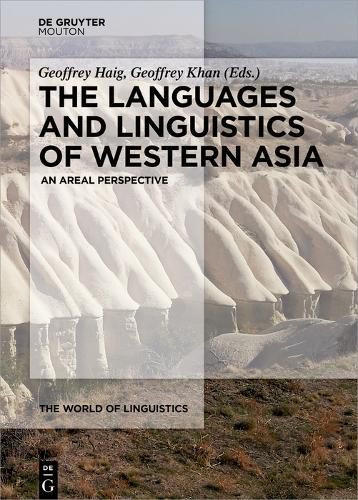Readings Newsletter
Become a Readings Member to make your shopping experience even easier.
Sign in or sign up for free!
You’re not far away from qualifying for FREE standard shipping within Australia
You’ve qualified for FREE standard shipping within Australia
The cart is loading…






This title is printed to order. This book may have been self-published. If so, we cannot guarantee the quality of the content. In the main most books will have gone through the editing process however some may not. We therefore suggest that you be aware of this before ordering this book. If in doubt check either the author or publisher’s details as we are unable to accept any returns unless they are faulty. Please contact us if you have any questions.
The languages of Western Asia belong to a variety of language families, including Indo-European, Kartvelian, Semitic, and Turkic, but share numerous features on account of being in areal contact over many centuries. This volume presents descriptions of the modern languages, contributed by leading specialists, and evaluates similarities across the languages that may have arisen by areal contact.
It begins with an introductory chapter presenting an overview of the various genetic groupings in the region and summarizing some of the significant features and issues relating to language contact. In the core of the volume the presentation of the languages is divided into five contact areas, which include (i) eastern Anatolia and northwestern Iran, (ii) northern Iraq, (iii) western Iran, (iv) the Caspian region and south Azerbaijan, and (v) the Caucasian rim and southern Black Sea coast. Each section contains chapters devoted to the languages of the area preceded by an introductory section that highlights significant contact phenomena. The volume is rounded off by an appendix with basic lexical items across a selection of the languages.
The handbook features contributions by Erik Anonby, Denise Bailey, Christiane Bulut, David Erschler, Geoffrey Haig, Geoffrey Khan, Rene Lacroix, Parvin Mahmoudveysi, Hrach Martirosyan, Ludwig Paul, Stephan Prochazka, Laurentia Schreiber, Don Stilo, Mortaza Taheri-Ardali, Christina van der Wal Anonby.
$9.00 standard shipping within Australia
FREE standard shipping within Australia for orders over $100.00
Express & International shipping calculated at checkout
This title is printed to order. This book may have been self-published. If so, we cannot guarantee the quality of the content. In the main most books will have gone through the editing process however some may not. We therefore suggest that you be aware of this before ordering this book. If in doubt check either the author or publisher’s details as we are unable to accept any returns unless they are faulty. Please contact us if you have any questions.
The languages of Western Asia belong to a variety of language families, including Indo-European, Kartvelian, Semitic, and Turkic, but share numerous features on account of being in areal contact over many centuries. This volume presents descriptions of the modern languages, contributed by leading specialists, and evaluates similarities across the languages that may have arisen by areal contact.
It begins with an introductory chapter presenting an overview of the various genetic groupings in the region and summarizing some of the significant features and issues relating to language contact. In the core of the volume the presentation of the languages is divided into five contact areas, which include (i) eastern Anatolia and northwestern Iran, (ii) northern Iraq, (iii) western Iran, (iv) the Caspian region and south Azerbaijan, and (v) the Caucasian rim and southern Black Sea coast. Each section contains chapters devoted to the languages of the area preceded by an introductory section that highlights significant contact phenomena. The volume is rounded off by an appendix with basic lexical items across a selection of the languages.
The handbook features contributions by Erik Anonby, Denise Bailey, Christiane Bulut, David Erschler, Geoffrey Haig, Geoffrey Khan, Rene Lacroix, Parvin Mahmoudveysi, Hrach Martirosyan, Ludwig Paul, Stephan Prochazka, Laurentia Schreiber, Don Stilo, Mortaza Taheri-Ardali, Christina van der Wal Anonby.